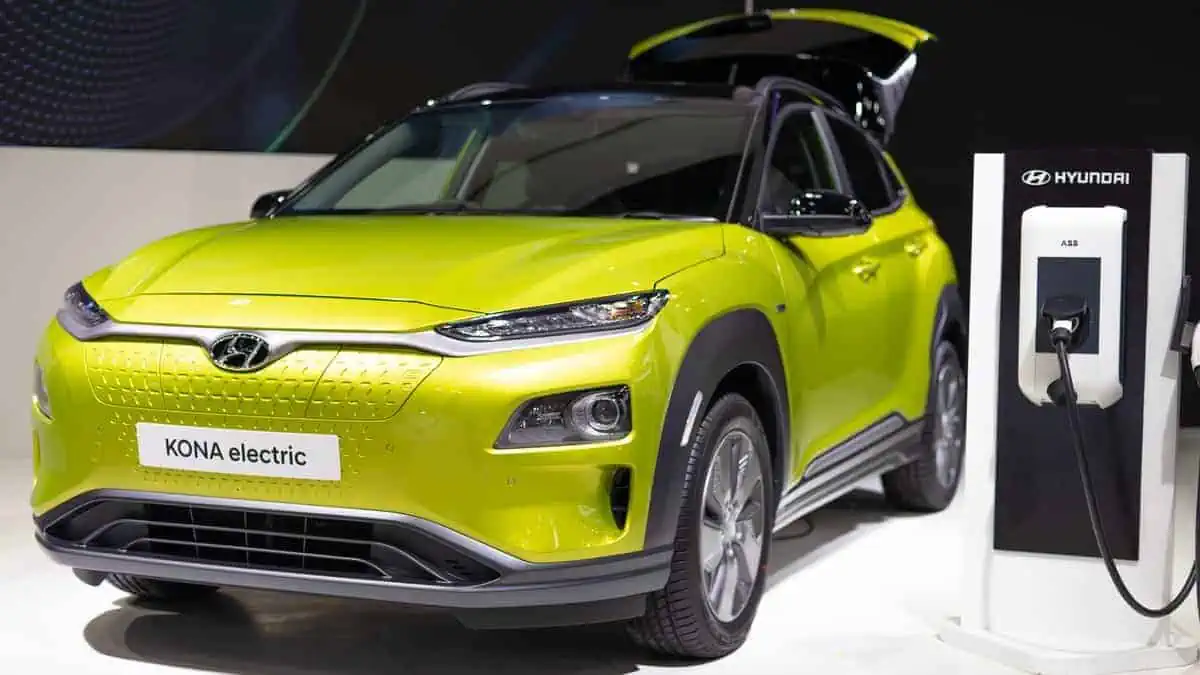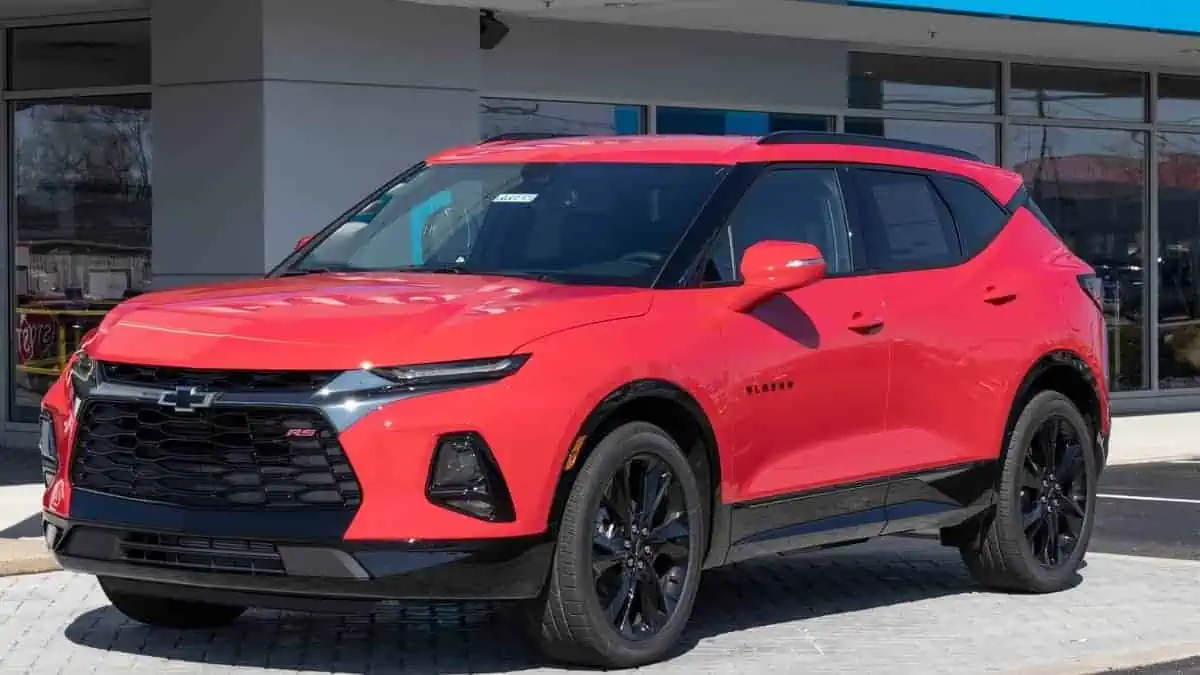The 2024 Hyundai Kona just made its debut, offering a more upscale appearance than the previous model.
SangYup Lee, who is in charge of design at Hyundai, shared that the company’s goal was to create an “upscale” look.
The all-new 2024 Hyundai Kona
Hyundai claims that the Kona was crafted with the electric vehicle in mind first, even though it is not built on a committed EV framework like the Hyundai Ioniq 5 and Ioniq 6. A few features distinctive to the electric vehicle are carried into the gas and hybrid models.
We’ll see more of this as the automotive industry continues to shift toward electric cars. In the case of the Kona, the front end opts for an EV-heavy aesthetic.
It has a more aerodynamic nose and an impressive 0.27 drag coefficient—active air flaps, typically found in more expensive market segments. It also has a frunk on the electric version for extra storage and a bare floor on the interior.
All of these features contribute to Kona’s impressively low drag coefficient. Furthermore, the following attributes may be the most impressive design element of the electric vehicle:
- pixelated Smooth Horizon Lamp
- wrap-around one-piece LED daytime running light
Hyundai claims it is the largest in the industry besides the Hyundai Grandeur sedan, sold in South Korea and other limited markets.
Lee stated that this is his preferred design feature on the new model because it is challenging to produce such a light. It considers how much it costs and how it contributes to the overall impact on a person’s first impression.
Importantly, it demonstrates an attention to detail, which can also be seen on the iconic profile line that trims diagonally across the side and ends in a fine edge on the front doors.
Adding sculpted wheel arches gives the vehicle more muscle and creates an interesting visual effect. Because of the cautious sculpting of the sheet metal and profile, the wheel arches protrude quite a bit further than they do in reality.
“We really went 3D there to create that effect.”
SangYup Lee
That is in addition to the taillights that appear to have been taken from a more expensive model.
Upgraded car features
The Ford Bronco Sport, Volkswagen Taos, Honda HR-V, and Toyota C-HR are formidable competitors. Therefore, the automaker will require a powerful player for Hyundai to compete.
A newly redesigned interior that is more spacious also contributes to this cause. The length of the 2024 Hyundai Kona is increased by 5.9 inches, it gains an inch in width, and its wheelbase expands by 2.4 inches.
The cargo area in the back will benefit the most from the additional half-foot of length that was added, which owners of the previous generation of the Kona requested.
Passengers will receive a bit more space. The Kona’s new dimensions move it closer to the more spacious end of the segment.
When you enter the cabin, you will notice that Kona has replaced a sporty and playful interior. The new one is only a step away in terms of the quality of its materials from being an entry-level luxury offering.
In addition to having pops of lighting effects on the doors and the glove box, dual side-by-side 12.3-inch screens are available. The Hyundai logo is removed from the steering wheel, just like on its Ioniq 6 cousin.
A column shifter is an additional space-saving device. These factors result in a more up-to-date, ergonomically sound cabin centered on the passenger experience.
In the United States, Hyundai will continue to follow its current strategy of selling electric and gas models while offering hybrids as an option in other markets.
The precise specifications for the US market will be revealed when the Hyundai Kona debuts in the United States at the New York International Auto Show within the coming weeks, per MSN.
This event will take place in New York City. However, reports suggest that the current powertrains on the latest generation of the Kona will carry over to the next generation.
These powertrains include the 1.6-liter four-cylinder and the 2.0-liter turbo-four engines. Hyundai hints that Kona EV’s 65.4 kWh battery and 160 kW electric motor is expected to provide the electric vehicle with approximately the same range.
The Kona can be charged from ten percent to eighty percent in forty-one minutes. However, it cannot match the lightning-fast charging times of its Ioniq relatives that are based on the dedicated-electric EGMP platform.
Hyundai Kona N model
There is still hope for the performance-oriented Kona N to be sold in the United States. It had black mirrors, a divided roof spoiler, a lower stance, one-of-a-kind alloy wheels measuring 19 inches, twin exhausts, and a silver side skirt.
Additionally, the N model comes with red sewing accents on the dashboard, seats, steering wheel, metal pedals, and an N-specific shifter.
Each model will have at least 11 color options available worldwide, with a couple of options exclusive to the electric vehicle and the gas-powered version, respectively.
Over-the-air (OTA) software updates and a slew of cutting-edge driver support and safety systems will be among the things that are brand new for the Kona.
Some of these systems are not accessible in the vehicles that compete with them.
Nonetheless, the new Kona’s larger dimensions, more upscale looks, and kinds of powertrain selections will make it an appealing alternative in the market. Nonetheless, we will soon receive more US-specific, including pricing information.
See Also
- Hyundai Motor nearly doubled global plug-in car sales in January 2023
- Hyundai Evolve+ EV subscription program simplifies EV ownership
- US sales for Hyundai Ioniq 5 jumped 56% in January 2023
- Hyundai Motor reported about 25,000 plug-in car sales in November 2022
- Hyundai to Support Sustainable World Cup with Eco-friendly Fleet Vehicles






